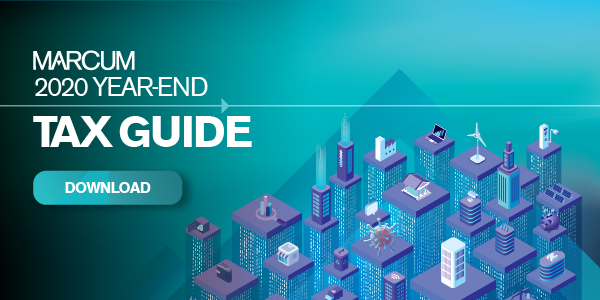IRS Provides New Guidance on the Employee Retention Credit
By Michael D’Addio, Principal, Tax & Business Services & Alexandra Corredor Perdomo, Tax & Business Services
On March 1, 2021, the Internal Revenue Service issued Notice 2021-20, which updates and clarifies guidance for employers planning to claim the Employee Retention Credit (ERTC) for 2020.
Most significantly, the Notice provides guidance concerning the interaction between the ERTC and the Paycheck Protection Program (PPP).
Background
One of the most significant changes included in the Consolidated Appropriations Act (CAA), signed into law in December 2020, allows employers who received a PPP loan to also claim the ERTC, though the same wages cannot be used for the credit and loan forgiveness. Prior to the passage of the CAA; employers who obtained PPP loans are not eligible for this credit.
For year-end 2020, employers who paid qualified wages between March 12 and December 31 and experienced full or partial suspension of their operations or a significant (50%) decline in gross receipts are eligible to claim the ERTC. (The gross receipts decline is measured by comparing the gross receipts for the same quarter in the previous year.)
The 2020 credit amount equals 50% of qualified wages paid, including qualified health plan expenses, up to $10,000 per employee. The maximum credit available per employee in 2020 is $5,000.
For 2021, the qualifications lessen and the credit is increased to 70% of qualified wages, limited to $7,000 for each quarter. In addition, the gross receipts test requires only a 20% drop in gross receipts in order to qualify when comparing the first two quarters of 2021 to the same quarter in 2019.
Notice 2021-20 also describes the interaction between the ERTC and PPP loans by explaining how and when employers that received PPP loans can claim the ERTC.
Under the Notice, wages are first eligible for the ERTC unless employers decide not utilize them for the credit (known as “electing out”). The exclusion can be done by not claiming the eligible wages on Form 941. However, the employer can change this and take credit for any unclaimed prior-period eligible wages by filing an amended return Form 941-X for the prior period.
With the interaction between the ERTC and the PPP Loans, the IRS has a more complex position with regards to excluded wages. If the employer reported more wages than necessary in the PPP Loan Forgiveness Application, the election out is not considered to have been made for the amount of wages not required to be reported. But, if the employer had other non-payroll costs that could be used for maximum PPP Loan Forgiveness, the employer can use these costs to determine the minimum amount of wages needed for loan forgiveness. These costs can be used only if they were included in the Loan Forgiveness Application.
The Notice provides many examples of what and how businesses can qualify to receive this credit.
The ERTC may also be limited if the wages are being utilized for other credit programs such as the Research and Development Credit, Families First Coronavirus Response Act (FFCRA) or other federal wage credit programs. The Internal Revenue Code includes ordering rules which describing which wages can be taken into account for determining the ERTC and other wage credit programs. Taxpayers should verify these rules when applying for more than one credit program.
If you have any questions regarding this content, please contact Michael D’Addio at [email protected] or contact your Marcum Tax Advisor.
Coronavirus Resource Center
Have more questions about the impact of the coronavirus on your business? Visit Marcum’s Coronavirus Resource Center for up-to-date information.








